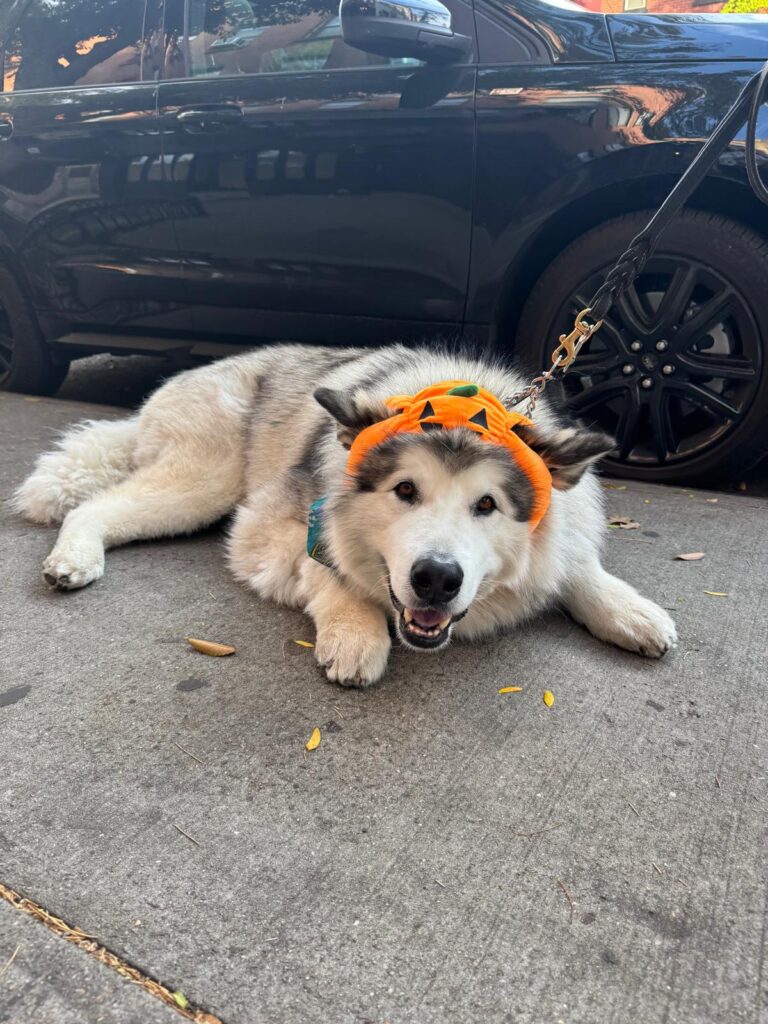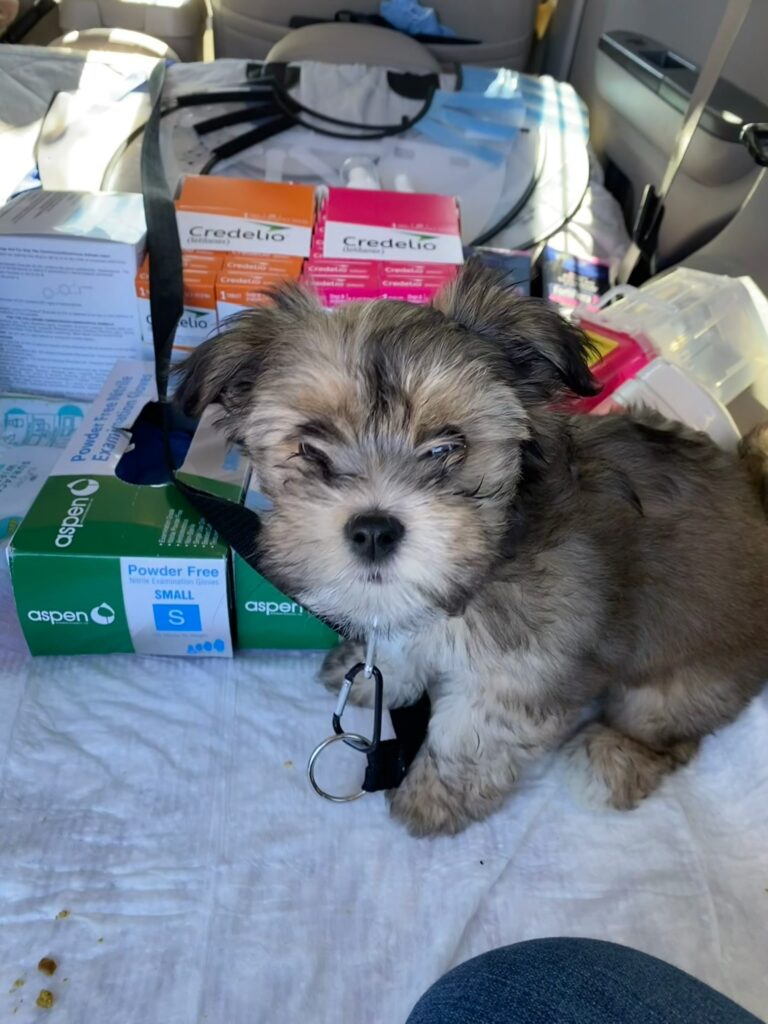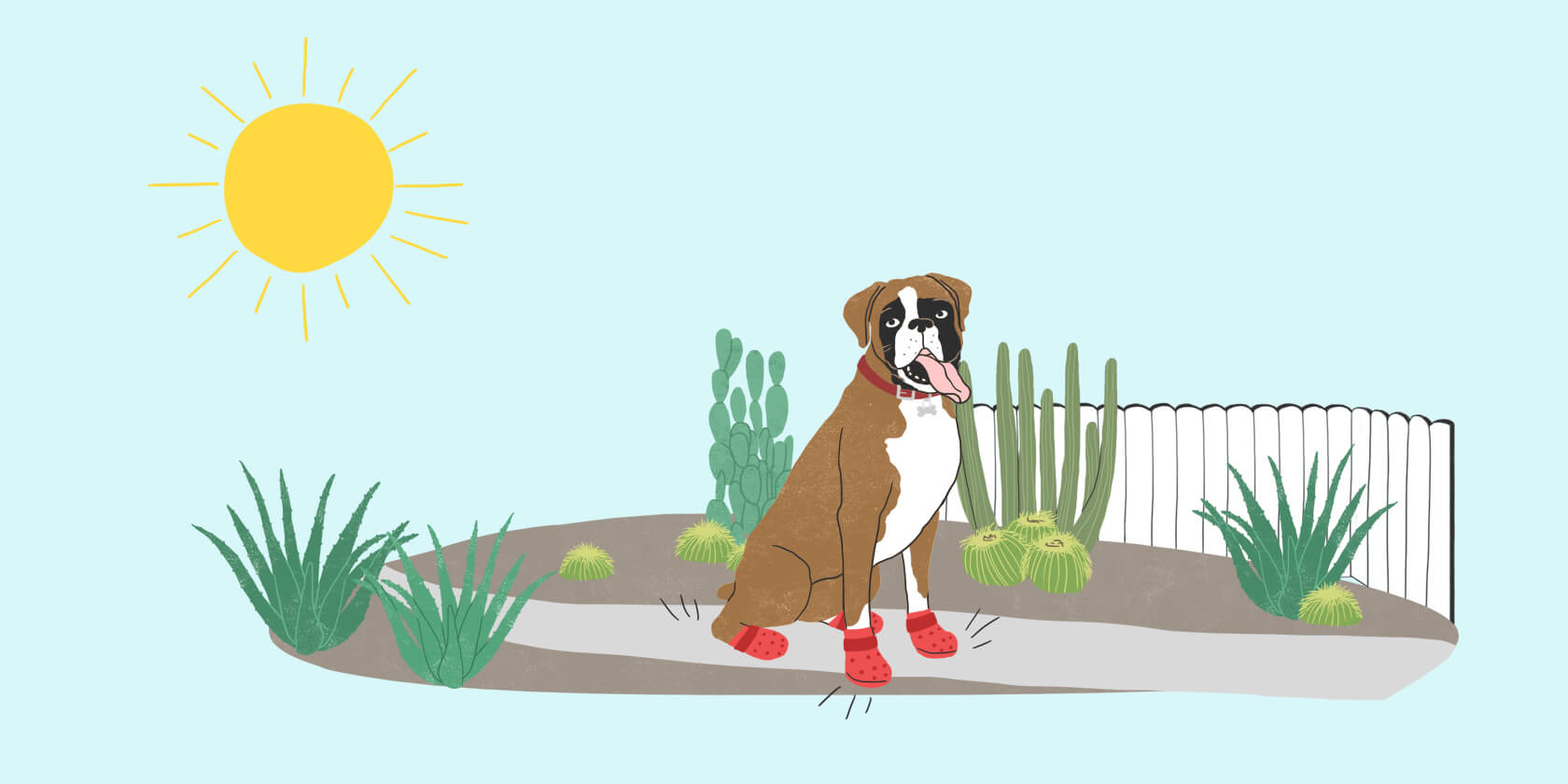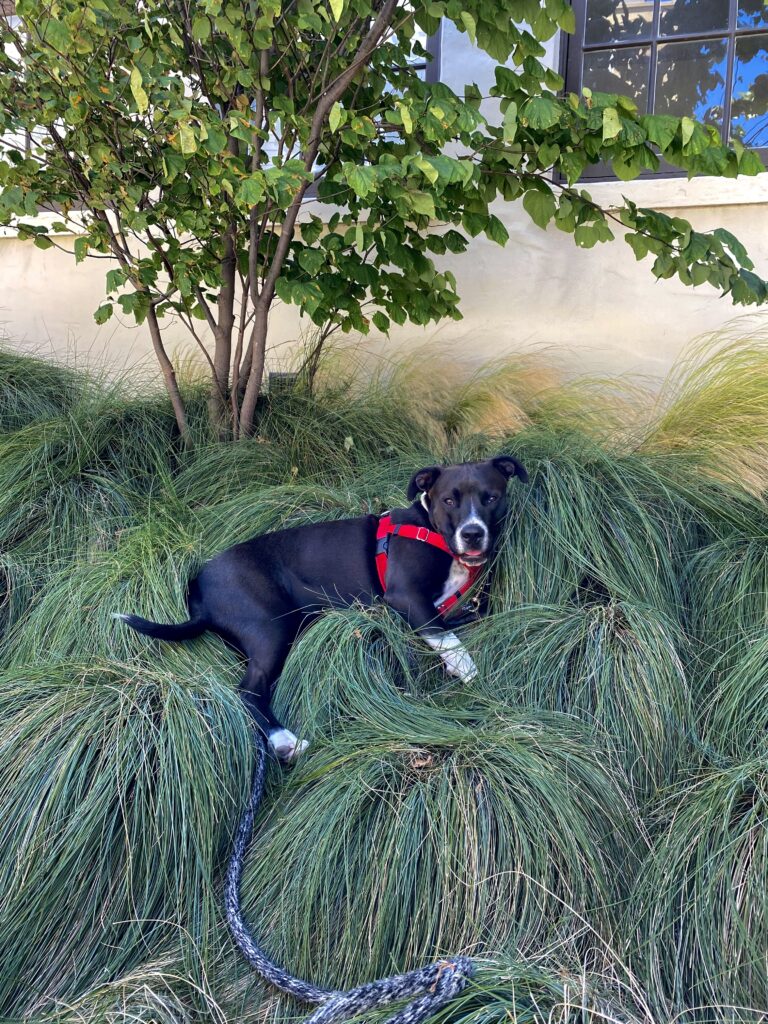October is National Pet Wellness Month! We will focus on preventative care, benefits of regular check-ups and the importance of the human-animal bond. Let’s dig into seasonal pet health issues, essential wellness services (from dental care to vaccinations), at-home wellness tips and responsible pet ownership. It is incredibly important to stay up to date on veterinary health information to identify early signs of issues in your pet or pets’ health.

When it comes to wellness, think proactive care and prevention. Check your calendar for your annual wellness check. Yearly physicals are crucial for early detection of health issues, even in seemingly healthy pets.
🍁 Vaccinations
Core and non-core vaccines protect your pet from many diseases.
Core vaccines are recommended for all cats, regardless of age or lifestyle. Vaccines for feline Panleukopenia virus (FPV), Feline Herpesvirus-1 (FHV-1), Feline Calicivirus (FCV), Feline Leukemia virus (FeLV) for cats less than one year of age and Rabies are all considered core vaccines.
Non-core vaccines are recommended for cats based on their exposure risk to specific diseases through lifestyle or geographic location. Vaccines for Bordetella bronchiseptica, Chlamydia felis, and FeLV for cats greater than one year of age are considered non-core vaccines.
*Even indoor cats can be exposed to diseases through shared air, visitors, or trips to the groomer or veterinarian.

Core vaccines highly recommended for all dogs include Rabies, Distemper, Adenovirus (Hepatitis), Parvovirus, Parainfluenza and Leptospirosis.
Non-core vaccines are based on your dog’s lifestyle, risks and environment and include, Bordetella, Canine Influenza and Lyme disease.
Whether to implement non-core vaccines or not is a one-on-one decision with your veterinarian based on your pet’s age, health and local disease risks. Consider you pet’s lifestyle. Think about where your pet goes, such as parks, boarding facilities and groomers, which can influence the needs of vaccines like Bordetella. Do you take your dog (even cat) to parks or hiking? Your geographic location and proximity to wildlife can affect your dog’s exposure to diseases like Leptospirosis.

🍁 Dental Health
To prevent dental disease in pets, establish a routine of daily tooth brushing with pet-safe toothpaste, provide safe dental chews and Veterinary Oral Health Council (VOHC)-approved toys, offer a dental-friendly diet, use water additives, and schedule regular veterinary check-ups for professional cleanings to maintain oral hygiene.
A lot of dental prevention is done at home by you the owner! Brush your pet’s teeth regularly using a pet-specific toothbrush and toothpaste to remove plaque and prevent tartar buildup. We recommend at least once a week. Be gentle on the gums.Provide safe dental chews and toys to encourage chewing, which helps clean teeth, but avoid hard objects like bones or antlers that can fracture teeth. Talk to your veterinarian about a dental-friendly diet, which includes dry food that helps clean teeth, and consider dental-specific diets or water additives to combat bacteria. And last but not least schedule annual veterinary dental exams: and cleanings under anesthesia to thoroughly remove plaque and tartar from below the gumline and check for any underlying issues.
Visit VOHC for a list of veterinarian approved dental products for dogs and cats.
🍁 Parasite Prevention
Parasites like fleas, ticks, worms, and heartworms pose health risks to pets, including skin irritation, disease transmission, malnutrition, and even death. Regular preventative treatments, prescribed by your veterinarian, are crucial for controlling infestations and protecting your pet and family from potentially zoonotic diseases. A comprehensive prevention plan includes monthly medications, regular grooming, maintaining a clean environment, and routine vet check-ups to monitor your pet’s health and catch issues early.
Common external parasites include fleas, ticks, mites and lice. Common internal parasites include intestinal worms like roundworms, hookworms, tapeworms and whipworms. They can cause digestive issues, malnutrition, and anemia, particularly in puppies and kittens. Heartworms are transmitted by mosquitoes, these worms live in the heart and lungs, leading to severe respiratory problems and heart failure. Preventative treatments protect your pet from the discomfort and serious health complications that parasites cause, including skin damage, disease, and life-threatening conditions. Some parasites, such as certain types of worms or ticks, can be transmitted to humans, making prevention a family health issue. Treating a severe parasitic infestation is often more expensive than routine preventative care.
Make sure to administer your monthly topical treatments, oral tablets or collars as discussed with your veterinarian to kill and prevent parasites. Regularly wash your pet’s bedding and vacuum your home to eliminate fleas and their eggs. Pick up pet waste in your yard and on walks to prevent the spread of internal parasites and don’t forget to wash your hands thoroughly afterwards. We advise regular grooming whether that is at home or at the groomer. While you groom your pet, check your pet’s coat for fleas, ticks, and other parasites, especially after outdoor activities. Do not miss or delay your annual or biannual check-ups with your veterinarian and inform them if you have skipped medications such as heartworm medications. You can also avoid areas with tall grass or wooded regions where ticks are more common.
Additionally, visit Pets & Parasites, a fantastic resource to learn more.

🍁 Additional Seasonal Fall Wellness Tips
To keep pets safe and healthy this autumn, watch for environmental hazards like toxic plants, fallen leaves, and chemicals such as antifreeze; manage Halloween risks by securing all candy and keeping pets away from decorations and trick-or-treaters; be mindful of weather changes with appropriate gear and hydration; and ensure your pet’s activity levels and diet are adjusted for the season to prevent weight gain.
Look out for environmental hazards such as toxic plants. Many fall plants, including chrysanthemums and autumn crocus, are toxic to pets. Ensure any plants you bring indoors are safe for your feline and canine companions. Check your yard for potential dangers like mushrooms, toxic fallen leaves, and acorns, and remove them promptly. Store antifreeze in sealed containers and clean up any spills immediately. Consider switching to pet-safe antifreeze formulas, as the sweet taste of regular antifreeze is highly attractive to dogs and cats but can be fatal. Consult ASPCA Poison Control for a detailed list of toxic plants, foods and household products. If you think your pet may have ingested a potentially poisonous substance, call (888) 426-4435. They are available 24 hours a day, 365 days of the year to address any animal poison-related emergency.
Halloween will be here before you know it! Protect your pets by keeping all chocolate, candies, and foods containing xylitol (a sugar substitute found in sugar-free treats) completely out of your pet’s reach, as they can cause severe illness, including seizures and liver failure. Small decorations can be choking hazards or cause intestinal blockages if swallowed. Keep decorations, candles, and open flames out of reach and place a barrier around fireplaces or space heaters. If you dress your pet for Halloween, ensure the costume allows them to see, breathe and move comfortably, and always supervise them. Be conscientious of noise and stress. Trick-or-treating can be overwhelming for pets. Create a quiet, safe space for them and secure them in a room or crate when opening the door for trick-or-treaters.

Although cooler weather can be more enjoyable for walks, remember that senior pets, small breeds and pets with thin coats are more susceptible to the cold. Continue regular exercise, but consider adjusting your pet’s routine for the shorter, cooler days. Morning or midday walks may be more comfortable. Do not skimp on hydration. Even though it is cooler, ensure your pet has access to fresh water at all times. Consider protecting your pet’s paws from cold, wet or icy surfaces by using booties. The New York Times shares their top picks here: https://www.nytimes.com/wirecutter/reviews/best-dog-boots/

In fall, watch for respiratory issues in pets caused by increased exposure to fall allergens like mold spores and ragweed pollen, which trigger coughing and sneezing, and by viral infections such as kennel cough as pets spend more time indoors. Other signs include eye and nasal discharge, lethargy, and labored breathing. You should also monitor for signs of increased dust mite exposure and worsening of underlying conditions like asthma. Prompt veterinary care is necessary for any signs of respiratory distress, especially in vulnerable pets.
Symptoms to watch out for include:
- Coughing and sneezing
- Nasal and eye discharge
- Labored or rapid breathing
- Wheezing
- Lethargy
- Loss of appetite
- Fever
- Blue or pale gums: (cyanosis or pallor) indicate a serious oxygen shortage
Common causes of fall respiratory issues include allergens (fallen leaves, decaying vegetation, ragweed pollen), viral infections, dust mites, pollutants (smoke from fireplaces and bonfires) and damp cold conditions.
* Contact your veterinarian promptly if your pet shows any signs of respiratory distress, especially if they are young, elderly, or have a compromised immune system.
Again prevention is key! Keep pets dry after walks in the rain or wet conditions. Ensure your pet has a warm, dry place to retreat to indoors. Maintain a clean home to minimize dust mites. Keep vaccinations up-to-date. Avoid crowded dog parks during outbreaks of respiratory illness.
Make sure to monitor your pet’s weight, as a combination of less activity and seasonal treats can lead to unwanted weight gain.
To help pets with joint pain as the weather cools, keep them warm with heated beds and blankets, provide gentle, low-impact exercise, maintain a healthy weight, and use joint supplements as recommended by a veterinarian. Other helpful strategies include creating a warm and draft-free home environment, using pet ramps to reduce strain, and consulting your vet for potential medications or other therapeutic options like acupuncture or laser therapy.
Lastly, look out for Wellness Wednesday content on our social media handles!
#nationalpetwellnessmonth #preventivecare #wellnessexams, #dentalcare #pethealth #wellnesswednesday





